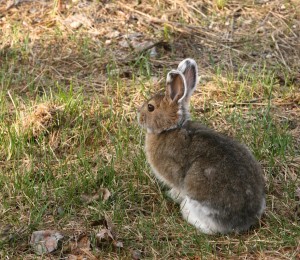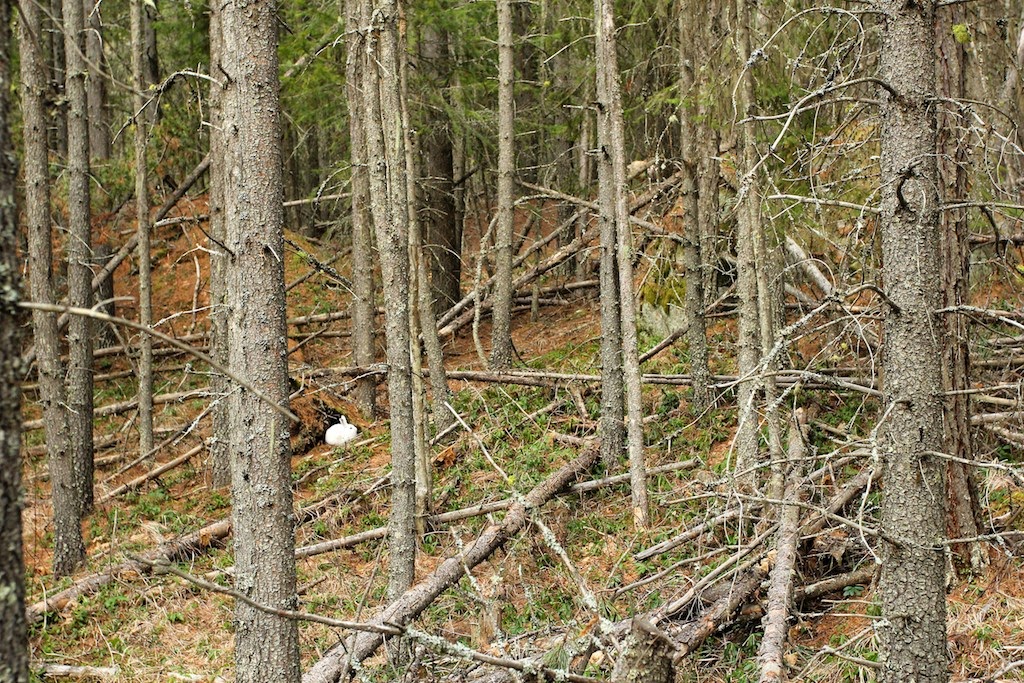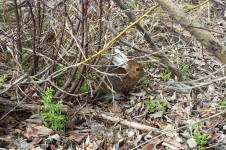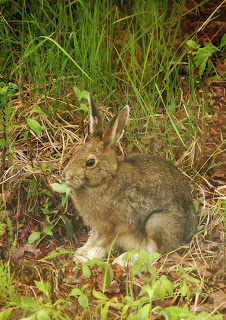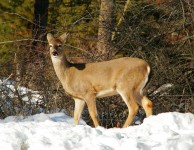A flash of white darts across the road into a brown thicket of leafless vegetation. The snowshoe hare typically blends into its surroundings but with no snowfall at lower elevations in November, the white-coated hare stood out like a sore thumb.
The length of daylight triggers snowshoe hares to molt from brown to white in the fall and white to brown in the spring. The molting process takes between 70 and 90 days to complete.
When low elevation snow is late, the white-coated hares are extremely vulnerable to predators. Even though snowshoe hares are active between dusk and dawn, being white against brown ground makes them easier targets for a myriad number of predators.
Not only do snowshoe hares have to avoid terrestrial predators, such as bobcats, lynx, foxes, weasels and coyotes, they also have to avoid the sharp eyes of predators overhead, including owls and hawks.
When camouflage doesn’t work, snowshoe hares deploy other tactics to avoid predators, such as speed and agility. Snowshoe hares can run nearly 30 mph and can quickly change directions. They also can leap over 10 feet in a single bound to confuse predators.
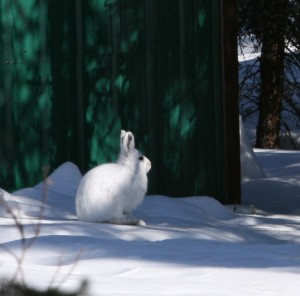
In most portions of their range, snowshoe hares molt into a white winter coat. In the southern portions of their range, some hares remain brown year-round.
During winter, their large hind feet help them stay on top of deep snow (hence the name snowshoe hare) when smaller-footed predators cannot.
Despite their speed, agility and camouflage, only 15 percent of snowshoe hares live to be a year old. The snowshoe hares that survive into adulthood (over a year old) multiply rapidly to keep the population afloat.
A female produces one to four litters a year and each litter consists of one to six leverets (baby hares)–meaning she could raise up to 24 young a year.
Leverets are born with hair, eyes open and the ability to move shortly after birth, unlike cottontail rabbit young. Hares also don’t make underground burrows like rabbits but instead make a nest of soft material and fur plucked from her fur coat in a shallow depression or in a hollow log.
Camouflage is important for leverets because they are not quick enough to outrun predators. Instead, leverets remain motionless to avoid detection.
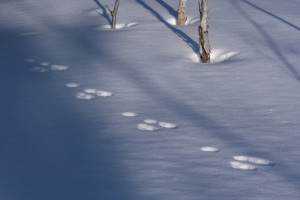
A snowshoe hare’s large feet enable it to stay on top of the snow. Their hind feet can spread as wide as 4.5 inches to increase surface area.
Predation seems to rule the life of hares and causes them to feed rapidly while exposed to the threat of predators. They eat green plants in the summer and woody vegetation in the winter.
To digest all the nutrients from their food, snowshoe hares are coprophagous–meaning they eat their feces to extract additional nutrients. The cellulose in plants is hard to digest and animals need a long digestive tract to extract all the nutrients. To compensate for a shorter digestive tract, snowshoe hares produce two types of pellets-soft and hard.
Hares eat the soft, jelly-like pellets directly from their anus (which is why we rarely find soft pellets). After the second time through the digestive tract, hard pellets are excreted. Unlike deer that excrete a pile of pellets at once, snowshoe hares deposit one pellet at a time, which is why there is often one pellet in a snowshoe hare track. If a pile of pellets is found, the snowshoe hare most likely was stationary for awhile, either resting or eating.
In the winter when hares are hard to see against the snowy backdrop, the “runs” they create between resting and feeding areas help us and other predators clue in to their presence. A presence that is in a continual state of uncertainty, especially if there is a late onset of snow.

